RIP Cindy Ray
Honouring Cindy Ray - a historic trailblazer in the tattoo industry.
7/30/20254 min read
Honouring Cindy Ray:
A Trailblazer for Women in Tattoo History
The tattoo world recently lost one of its most iconic and trailblazing figures: Cindy Ray, who passed away on 13 July 2025. Her legacy profoundly shaped the history and culture of tattooing - especially for women - and will continue to inspire generations to come. Her journey from a tattooed model to a revered artist and cultural icon is not only inspiring but represents a crucial chapter in the story of female empowerment within a traditionally male-dominated craft.
Early Life and the Birth of a Tattoo Icon
Born Bev Robinson in 1942 in Australia, Cindy Ray’s entry into the tattoo world was almost serendipitous. In an era when tattoos were heavily stigmatised and mostly associated with men in the military, sailors, or “outsiders,” Cindy boldly embraced tattooing as a form of self-expression that transcended societal norms. She was offered an opportunity by photographer Harry Bartram, who proposed to pay for her tattoos in exchange for photographing her body art.
These images not only captured Cindy’s striking presence but also broke new ground by showcasing tattoos on a woman’s body in ways that were both artistic and provocative. Cindy became Australia’s first tattooed pin-up girl, and her photographs circulated worldwide, introducing a fresh narrative of femininity intertwined with body art. This was groundbreaking at a time when female tattooed figures were virtually invisible in the public eye.
Exploitation Behind the Spotlight
While Cindy Ray gained international fame, much of her early notoriety came at a personal cost. Harry Bartram, the man who orchestrated her transformation into “The Tattooed Lady,” exerted significant control over her image, her story, and the profits generated from it. While he financed her tattoos, he also tightly managed her public appearances and sold her photographs globally - often without fair compensation to Cindy herself. She later spoke candidly about feeling used, acknowledging that Bartram profited immensely from her body while she received little of the financial reward. This exploitation speaks to a larger pattern in which women, especially those breaking societal norms, are often commodified by those with greater power. Cindy’s later decision to reclaim her agency by becoming a tattoo artist herself was not just a professional evolution - it was a powerful act of liberation.
Breaking Barriers: From Muse to Artist
Cindy’s influence was not limited to being a muse or model. By the 1960s, she took control of her narrative, becoming “Cindy Ray, the Tattooed Lady,” a performer who toured Australia showcasing her extensive tattoos. This tour was more than a spectacle, it was a powerful challenge to the conservative societal attitudes towards women’s bodies and tattoos. Cindy’s public presence asserted that women could claim their bodies as canvases and artists could be women, too.
Her transition from tattoo model to tattoo artist was another historic step. Cindy opened Moving Pictures Tattoo Studio in Williamstown, Victoria, where she tattooed clients with skill and artistry. She proved that female tattooers could thrive professionally in a craft long dominated by men.
Historical Significance in the Tattoo Community
Cindy Ray’s career spanned decades during which tattoo culture evolved dramatically. She was at the forefront during a time when tattoos were largely underground and often stigmatised. Her visibility as a heavily tattooed woman helped to normalise tattoos on women and opened doors for future generations of female artists and enthusiasts.
Her induction into the Lyle Tuttle Tattoo Art Museum’s Tattoo Hall of Fame in 2005 recognised not just her artistry but her monumental role in tattoo history. Cindy’s life and work challenged gender roles and helped shift public perceptions, contributing to the tattoo renaissance that made tattoos mainstream and diverse.
Feminism and Body Autonomy Through Ink
What makes Cindy Ray’s legacy particularly significant is how her story intersects with feminist ideas of body autonomy and self-expression. In an era when women’s bodies were tightly controlled and policed, Cindy’s tattoos were acts of rebellion and empowerment. By embracing her body art publicly, she defied the expectation that women’s bodies should be “clean” or “untouched” by ink.
Her tattoos weren’t just decorations; they were statements of identity and freedom. This empowerment through tattooing resonates deeply today with women artists and clients who see body art as a way to reclaim control and celebrate individuality.
Legacy and Influence
Cindy Ray’s impact can be seen in the vibrant community of female tattoo artists today who owe much to her pioneering spirit. She was a role model who showed that women belong not only as subjects of tattoo art but as creators and innovators shaping the culture.
Her story remains a testament to the power of persistence and authenticity. Cindy paved a path in tattoo history that expanded what it meant to be a woman in tattooing and inspired countless others to follow.


Goodbye, Cindy Ray
1942 - 2025

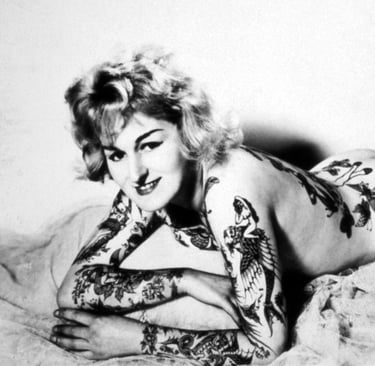
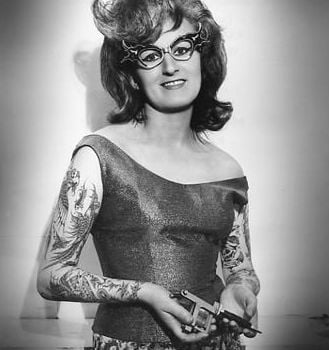

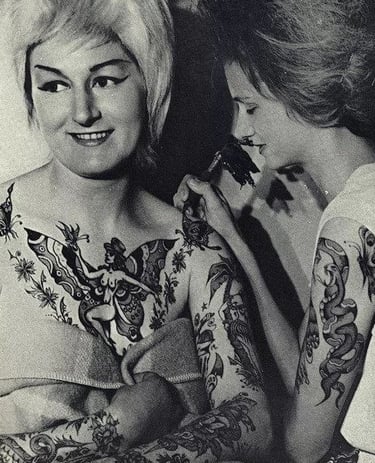

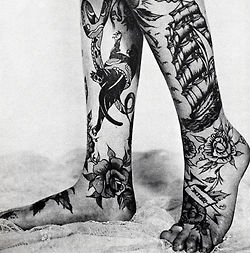

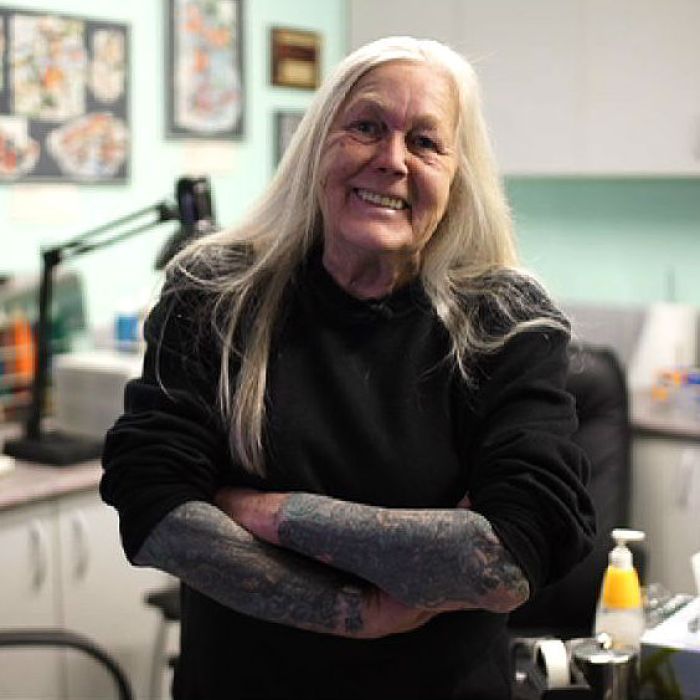

Remembering Cindy Ray
As we honour Cindy Ray’s life, we celebrate a woman who changed tattoo culture forever. Her journey from a tattooed pin-up girl to a respected tattoo artist and cultural icon is a beacon of inspiration, reminding us how courage and creativity can break barriers and transform industries.
Cindy’s legacy lives on every time a woman steps into a tattoo shop with confidence or a female artist picks up a tattoo machine with passion. She is a pioneer whose story deserves to be remembered and retold.